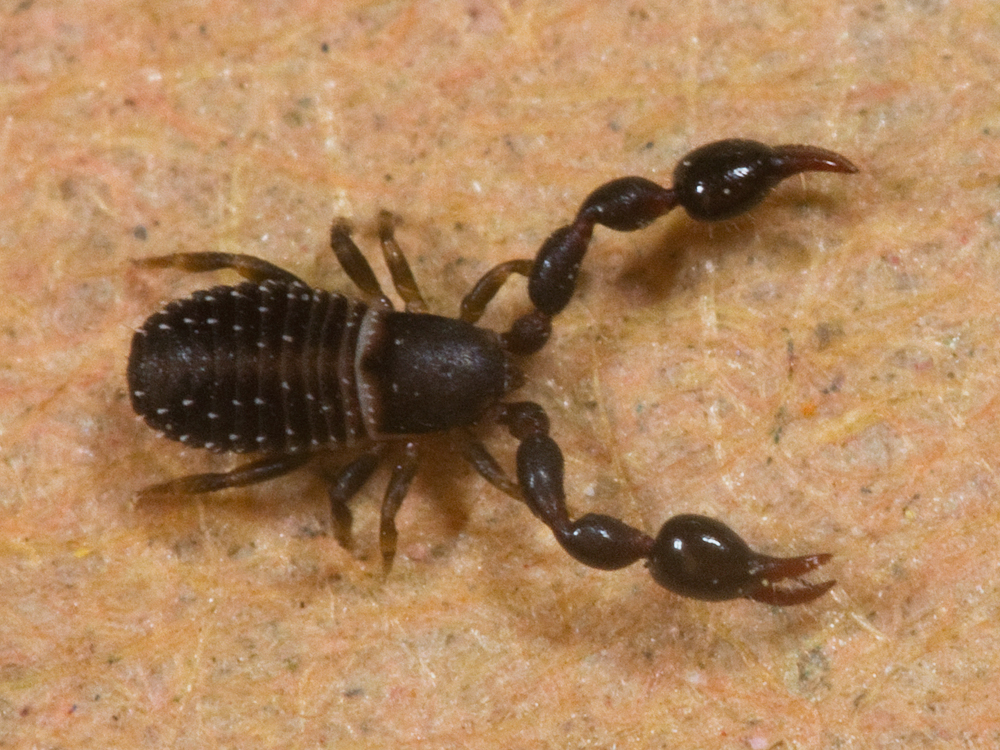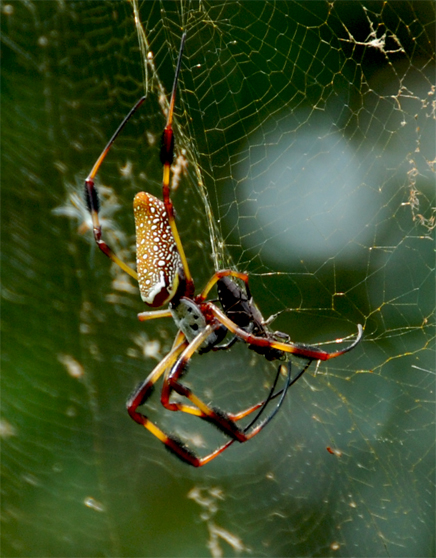|
Conicochernes
''Conicochernes'' is a genus of pseudoscorpions in the Chernetidae family. It is endemic to Australia. It was described in 1948 by Austrian arachnologist Max Beier Max Beier (6 April 1903 in Spittal an der Drau – 4 July 1979 in Vienna) was an Austrian arachnologist and entomologist. He studied zoology at the University of Vienna, and obtained his doctorate there in 1927. He took up a post at the Natural H .... Species The genus contains the following species: * '' Conicochernes brevispinosus'' (L.Koch and Keyserling, 1885) * '' Conicochernes crassus'' Beier, 1954 * '' Conicochernes doyleae'' Kennedy, 1990 * '' Conicochernes globosus'' Beier, 1954 * '' Conicochernes incrassatus'' (Beier, 1933) References Chernetidae Pseudoscorpion genera Endemic fauna of Australia Pseudoscorpions of Australia Taxa described in 1948 Taxa named by Max Beier {{pseudoscorpion-stub ... [...More Info...] [...Related Items...] OR: [Wikipedia] [Google] [Baidu] |
Conicochernes Doyleae
''Conicochernes doyleae'' is a species of pseudoscorpion in the Chernetidae family. It is endemic to Australia. It was described in 1989 by Australian arachnologist Clarice Kennedy. The specific epithet ''doyleae'' honours Suzanne Doyle, colleague and field assistant of the author. Description The body length of males is 2.70–3.28 mm; that of females 2.92–3.46 mm. The colour is dark red-brown. Distribution and habitat The species occurs in eastern New South Wales. The type locality is Stanley Street, Chatswood, Sydney, where pseudoscorpions were collected from beneath the bark of a brush box tree. Behaviour The pseudoscorpions are terrestrial predators Predation is a biological interaction where one organism, the predator, kills and eats another organism, its prey. It is one of a family of common feeding behaviours that includes parasitism and micropredation (which usually do not kill the .... References Chernetidae Endemic fauna of Au ... [...More Info...] [...Related Items...] OR: [Wikipedia] [Google] [Baidu] |
Conicochernes Crassus
''Conicochernes crassus'' is a species of pseudoscorpion in the Chernetidae family. It is endemic to Australia. It was described in 1954 by Austrian arachnologist Max Beier. Distribution and habitat The species occurs in south-west Western Australia. The type locality is Denmark, where pseudoscorpions were collected from beneath tree bark. Behaviour The pseudoscorpions are terrestrial predators Predation is a biological interaction where one organism, the predator, kills and eats another organism, its prey. It is one of a family of common feeding behaviours that includes parasitism and micropredation (which usually do not kill the .... References Chernetidae Endemic fauna of Australia Pseudoscorpions of Australia Arthropods of Western Australia Animals described in 1954 Taxa named by Max Beier {{pseudoscorpion-stub ... [...More Info...] [...Related Items...] OR: [Wikipedia] [Google] [Baidu] |
Conicochernes Brevispinosus
''Conicochernes brevispinosus'' is a species of pseudoscorpion in the Chernetidae family. It is endemic to Australia. It was described in 1885 by German arachnologists Ludwig Carl Christian Koch and Eugen von Keyserling. Distribution and habitat The species occurs at various sites in eastern and south-eastern Australia. Type localities include Rockhampton and Peak Downs in Central Queensland, and Mount Lofty in South Australia, where pseudoscorpions were collected from beneath tree bark. Behaviour The pseudoscorpions are terrestrial predators Predation is a biological interaction where one organism, the predator, kills and eats another organism, its prey. It is one of a family of common feeding behaviours that includes parasitism and micropredation (which usually do not kill the .... References Chernetidae Endemic fauna of Australia Pseudoscorpions of Australia Fauna of the Australian Capital Territory Arthropods of New South Wales Arthropods of Q ... [...More Info...] [...Related Items...] OR: [Wikipedia] [Google] [Baidu] |
Conicochernes Globosus
''Conicochernes globosus'' is a species of pseudoscorpion in the Chernetidae family. It is endemic to Australia. It was described in 1954 by Austrian arachnologist Max Beier. Distribution and habitat The species occurs in south-west Western Australia. The type locality is Porongurup, where pseudoscorpions were collected from beneath tree bark. Behaviour The pseudoscorpions are terrestrial predators Predation is a biological interaction where one organism, the predator, kills and eats another organism, its prey. It is one of a family of common feeding behaviours that includes parasitism and micropredation (which usually do not kill the .... References Chernetidae Endemic fauna of Australia Pseudoscorpions of Australia Arthropods of Western Australia Animals described in 1954 Taxa named by Max Beier {{pseudoscorpion-stub ... [...More Info...] [...Related Items...] OR: [Wikipedia] [Google] [Baidu] |
Conicochernes Incrassatus
''Conicochernes incrassatus'' is a species of pseudoscorpion in the Chernetidae family. It is endemic to Australia. It was described in 1933 by Austrian arachnologist Max Beier. Distribution and habitat The species occurs in Victoria. The type locality is Upper Ferntree Gully, 32 km east of central Melbourne, where the holotype A holotype is a single physical example (or illustration) of an organism, known to have been used when the species (or lower-ranked taxon) was formally described. It is either the single such physical example (or illustration) or one of several ... was collected from beneath tree bark. Behaviour The pseudoscorpions are terrestrial animal, terrestrial predation, predators. References Chernetidae Endemic fauna of Australia Pseudoscorpions of Australia Arthropods of Victoria (state) Animals described in 1933 Taxa named by Max Beier {{pseudoscorpion-stub ... [...More Info...] [...Related Items...] OR: [Wikipedia] [Google] [Baidu] |
Chernetidae
The Chernetidae are a family of pseudoscorpions with over 650 described species and 110 genera. Subfamilies Subfamilies and genera include: ;Chernetinae ;Goniochernetinae * ''Calymmachernes'' Beier, 1954 * ''Conicochernes'' Beier, 1948 * ''Goniochernes'' Beier, 1932 ;Lamprochernetinae * ''Allochernes'' Beier, 1932 * ''Anthrenochernes'' Lohmander, 1939 * ''Bipeltochernes'' Dashdamirov, 2005 * ''Lamprochernes'' Tömösváry, 1882 * ''Lasiochernes'' Beier, 1932 * ''Megachernes'' Beier, 1932 * ''Nudochernes'' Beier, 1935 * ''Pselaphochernes'' Beier, 1932 References Chernetidae, Pseudoscorpion families {{Pseudoscorpion-stub ... [...More Info...] [...Related Items...] OR: [Wikipedia] [Google] [Baidu] |
Max Beier
Max Beier (6 April 1903 in Spittal an der Drau – 4 July 1979 in Vienna) was an Austrian arachnologist and entomologist. He studied zoology at the University of Vienna, and obtained his doctorate there in 1927. He took up a post at the Natural History Museum in Vienna, in the same year, developing an expertise in pseudoscorpions. He was appointed Director of the zoological department of the Vienna Museum in 1962, and retired in 1968. A list of Beier's 398 scientific papers was published, with an obituary, in ''Annalen des Naturhistorischen Museums in Wien''. 252 were on pseudoscorpions. He described and named over 1200 pseudoscorpion species of which 1180 were still valid in 2007. He was editor of the ''Orthopterorum Catalogus'' and an updated edition of the volume on insects in the '. Awards Beier was awarded the Fabricius Medal in January 1967 of Deutsche Gesellschaft für Allgemeine und Angewandte Entomologie (German entomology society). In July 1968 he was granted an ... [...More Info...] [...Related Items...] OR: [Wikipedia] [Google] [Baidu] |
Genus
Genus ( plural genera ) is a taxonomic rank used in the biological classification of living and fossil organisms as well as viruses. In the hierarchy of biological classification, genus comes above species and below family. In binomial nomenclature, the genus name forms the first part of the binomial species name for each species within the genus. :E.g. '' Panthera leo'' (lion) and '' Panthera onca'' (jaguar) are two species within the genus ''Panthera''. ''Panthera'' is a genus within the family Felidae. The composition of a genus is determined by taxonomists. The standards for genus classification are not strictly codified, so different authorities often produce different classifications for genera. There are some general practices used, however, including the idea that a newly defined genus should fulfill these three criteria to be descriptively useful: # monophyly – all descendants of an ancestral taxon are grouped together (i.e. phylogenetic analysis should c ... [...More Info...] [...Related Items...] OR: [Wikipedia] [Google] [Baidu] |
Pseudoscorpions
Pseudoscorpions, also known as false scorpions or book scorpions, are small, scorpion-like arachnids belonging to the order Pseudoscorpiones, also known as Pseudoscorpionida or Chelonethida. Pseudoscorpions are generally beneficial to humans since they prey on clothes moth larvae, carpet beetle larvae, booklice, ants, mites, and small flies. They are tiny, and are rarely noticed due to their small size, despite being common in many environments. When people do see pseudoscorpions, especially indoors, they are often mistaken for ticks or small spiders. Pseudoscorpions often carry out phoresis, a form of commensalism in which one organism uses another for the purpose of transport. Characteristics Pseudoscorpions belong to the class Arachnida. They are small arachnids with a flat, pear-shaped body, and pincer-like pedipalps that resemble those of scorpions. They usually range from in length.Pennsylvania State University, DepartmentEntomological Notes: Pseudoscorpion Fact She ... [...More Info...] [...Related Items...] OR: [Wikipedia] [Google] [Baidu] |
Family (biology)
Family ( la, familia, plural ') is one of the eight major hierarchical taxonomic ranks in Linnaean taxonomy. It is classified between order and genus. A family may be divided into subfamilies, which are intermediate ranks between the ranks of family and genus. The official family names are Latin in origin; however, popular names are often used: for example, walnut trees and hickory trees belong to the family Juglandaceae, but that family is commonly referred to as the "walnut family". What belongs to a family—or if a described family should be recognized at all—are proposed and determined by practicing taxonomists. There are no hard rules for describing or recognizing a family, but in plants, they can be characterized on the basis of both vegetative and reproductive features of plant species. Taxonomists often take different positions about descriptions, and there may be no broad consensus across the scientific community for some time. The publishing of new data and opi ... [...More Info...] [...Related Items...] OR: [Wikipedia] [Google] [Baidu] |
Endemism
Endemism is the state of a species being found in a single defined geographic location, such as an island, state, nation, country or other defined zone; organisms that are indigenous to a place are not endemic to it if they are also found elsewhere. For example, the Cape sugarbird is found exclusively in southwestern South Africa and is therefore said to be ''endemic'' to that particular part of the world. An endemic species can be also be referred to as an ''endemism'' or in scientific literature as an ''endemite''. For example ''Cytisus aeolicus'' is an endemite of the Italian flora. ''Adzharia renschi'' was once believed to be an endemite of the Caucasus, but it was later discovered to be a non-indigenous species from South America belonging to a different genus. The extreme opposite of an endemic species is one with a cosmopolitan distribution, having a global or widespread range. A rare alternative term for a species that is endemic is "precinctive", which applies t ... [...More Info...] [...Related Items...] OR: [Wikipedia] [Google] [Baidu] |
Arachnology
Arachnology is the scientific study of arachnids, which comprise spiders and related invertebrates such as scorpions, pseudoscorpions, and harvestmen. Those who study spiders and other arachnids are arachnologists. More narrowly, the study of spiders alone (order Araneae) is known as araneology. The word " arachnology" derives from Greek , ''arachnē'', "spider"; and , ''-logia'', "the study of a particular subject". Arachnology as a science Arachnologists are primarily responsible for classifying arachnids and studying aspects of their biology. In the popular imagination, they are sometimes referred to as spider experts. Disciplines within arachnology include naming species and determining their evolutionary relationships to one another (taxonomy and systematics), studying how they interact with other members of their species and/or their environment ( behavioural ecology), or how they are distributed in different regions and habitats (faunistics). Other arachnologists perf ... [...More Info...] [...Related Items...] OR: [Wikipedia] [Google] [Baidu] |


.jpg)
